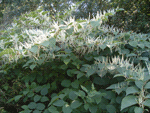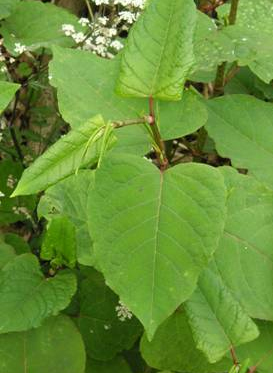Friday 2 September 2011
The History of Knotweed in Europe
Japanese Knotweed; a menace to botanists, gardeners and a lot of others who have fallen victim to the tenacious plant. But how did Japanese knotweed get started in its campaign to invade the scenery of the earth? Here is a brief evaluation of the ‘roots’ of knotweed in the western world and how it got to Europe and the United States.
Early records of the plant suggest its discovery around the late 1700s in Japan; however it wasn’t rediscovered in the western world for around 150 years. Then in the early 1800s, it started to be introduced to the west as a cosmetic fodder plant thanks to the speed of development and the density of the vegetation it creates. This made it very good for producing screens in gardens.
The tremendous rhizome system created by knotweed was another feature for the marketers of the plant. While these days, the root design of knotweed and the quantity of root needed to infect another location (around the size of a pea!), is well known and feared as one of the various reasons it’s so hard to eliminate once it takes a hold, but when it was first becoming spread around Europe this root structure along with the speed of growth was used to prevent soil erosion. And to that end, it was highly reliable. This was also one of the reasons that knotweed escaped Europe and was introduced in America.
In the UK however, the release was primarily as a garden plant, the original plants were planted in the 1850s and it was dispersed all over the UK in the following years. By the 1880s it was perceived as "naturalised" in the UK.
The undesirable aspects of knotweed took a remarkably long time to come to light. Only at the end of the 19th century were people realizing the plant started sprouting up in places it hadn’t recently been placed and only in 1905 did the Royal Horticultural Society suggest not to plant it unless it was painstakingly taken care of.
Of course at this point, it was much too late and many gardens had been terribly afflicted with Japanese knotweed. It went on to spread out relatively unrestrained till 1981 after the government brought in legal guidelines to suppress the growth of the plant.
Today estimates of the expenditures involved with Japanese knotweed eradication add up to some 150 million pounds each year in combating the spread of this plant. Past simply being only a weed now, it can cause major damage to properties, foundations and tarmac where it sprouts though. In these cases it is especially tough to get rid of, so if you see knotweed, don’t think it’ll subside, nip it in the bud, with more than secateurs.
Subscribe to:
Posts (Atom)

